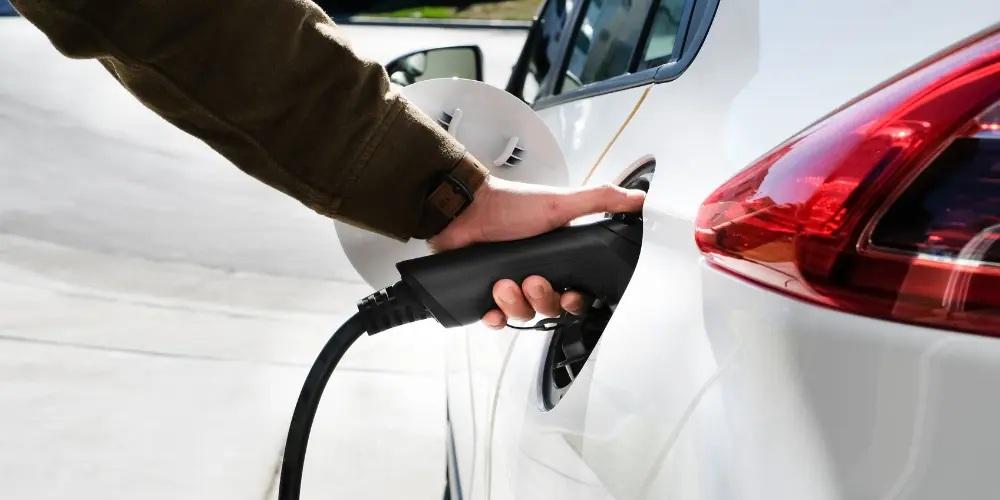The Complete Guide to Home Electric Vehicle Charging Stations

Home EV Charging Stations: A Complete Guide
Introduction
Electric vehicles (EVs) are no longer just a futuristic concept—they are part of everyday life. Adoption has accelerated in recent years, driven by environmental concerns, government incentives, and improvements in battery technology. EV sales have nearly doubled in only a few years, with growth expected to continue as automakers expand their lineups and charging infrastructure develops.
For most EV owners, one essential question arises: How do you keep your vehicle charged conveniently and affordably?
The answer for many drivers is home charging. Instead of depending solely on public stations, home charging stations provide overnight refueling, ensuring your EV is ready each morning. While plugging into a standard outlet works for some, dedicated home chargers deliver faster charging, smart features, and long-term reliability.
This guide explores the types of residential EV chargers, their pros and cons, installation requirements, and how to choose the right system for your household.
Types of Residential EV Charging Stations
Level 1 Charging
Level 1 chargers are the entry-level option, typically included with new EVs. They plug directly into a standard 120-volt household outlet, requiring no special installation.
-
Speed: Adds about 4–5 miles of range per hour
-
Full Charge Time: Up to 40+ hours for larger batteries
-
Cost: Often free with the vehicle, or $100–$200 if purchased separately
-
Best For: Short commutes, renters, or first-time EV owners
Level 1 is slow, but for drivers covering fewer than 30 miles daily, overnight charging can be sufficient.
Level 2 Charging
Level 2 chargers are the most popular choice for homeowners. They use a 240-volt outlet (the same as large appliances like dryers), delivering much faster charging speeds.
-
Speed: Adds 25–35 miles of range per hour
-
Power Output: Typically 7–11 kW; high-end models up to 19 kW
-
Amperage Options: 32, 40, 50, or 80 amps
-
Cost: $400–$2,000 for equipment; $500–$1,500 for installation
-
Best For: Daily drivers, long-range EVs, or households with multiple EVs
Though installation requires a licensed electrician, Level 2 charging offers the right balance of speed and practicality for most EV owners.
DC Fast Charging (Level 3)
These are the high-powered chargers found at commercial stations. Delivering 50–350 kW, they can recharge most EVs to 80% in 20–40 minutes.
However, their high cost, extreme power requirements, and specialized equipment make them impractical for most homes. While future residential versions may emerge, today they remain a commercial-only solution.
Pros and Cons of At-Home EV Charging
Advantages:
-
Convenience: Charge overnight at home—no waiting in line at public stations.
-
Cost Savings: Home charging is often cheaper, especially with off-peak utility rates.
-
Control: Smart chargers let you schedule sessions, track energy use, and integrate with solar panels or energy management systems.
-
Property Value: Homes with EV chargers appeal to buyers preparing for the EV future.
Drawbacks:
-
Upfront Costs: Equipment and installation may be expensive, though rebates help.
-
Slower Than DC Fast Charging: Even Level 2 cannot match public fast chargers.
-
Limited Access for Renters: Apartment residents may face challenges installing chargers, though more multi-unit buildings are beginning to add infrastructure.
Choosing the Right EV Charger for Your Home
When selecting a home charging station, consider these key factors:
-
Amperage: Higher amps mean faster charging. A 40–50 amp charger suits most homes; 80 amps nearly doubles charging speed but requires stronger electrical capacity.
-
Cable Length: Opt for 20–25 feet for flexibility, especially if future EVs have ports in different locations.
-
Cable Management: Look for built-in holsters or hooks to keep your garage tidy and safe.
-
Ease of Use: High-quality connectors should be durable and comfortable to plug/unplug daily.
-
Smart Features: Wi-Fi or Bluetooth connectivity enables scheduling, cost tracking, and energy optimization.
-
Weather Resistance: Outdoor units should be NEMA-rated to withstand rain, dust, and temperature extremes.
Installation Considerations
Installing a Level 2 charger usually requires:
-
Electrical Panel Capacity: An electrician must confirm your panel can handle the extra load. Upgrades may be necessary.
-
Dedicated Circuit: A separate breaker ensures safe operation.
-
Professional Installation: Ensures compliance with local codes and reliable long-term performance.
-
Cost: Typically $500–$1,500, depending on wiring and panel upgrades.
Incentives and Rebates
Government programs, utilities, and automakers often offer financial assistance for EV charger installation:
-
Federal Tax Credits: Some regions cover a portion of equipment and installation costs.
-
State & Local Rebates: Programs may provide $200–$1,000 or more in rebates.
-
Utility Programs: Discounts, free installation, or lower time-of-use rates help reduce ongoing costs.
These incentives significantly lower the upfront investment and make upgrading more affordable.
The Future of Home EV Charging
-
Renewable Integration: Pairing chargers with solar panels and batteries creates sustainable, low-cost charging.
-
Vehicle-to-Grid (V2G): EVs will eventually serve as backup power sources for homes and grids.
-
Smarter Energy Management: Chargers will optimize energy use, shifting charging to off-peak times automatically.
-
Wider Access: More apartment complexes and shared housing developments are adopting EV infrastructure.
Conclusion
Home EV charging stations are reshaping how people drive and live. They deliver unmatched convenience, long-term savings, and sustainability, while supporting the global shift toward electric transportation.
Though upfront costs and installation requirements may pose challenges, available incentives and the benefits of faster, reliable charging make them worthwhile for most EV owners. As technology advances, home charging will continue to play a central role in making EVs practical and mainstream.
For today’s drivers, installing a home charging station isn’t just about powering a vehicle—it’s about investing in the future of mobility.
It's important to know about Google SEO to help your website rank higher in search results.






